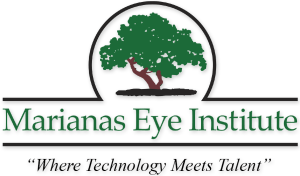(News from the American Academy of Ophthalmology)
Glaucoma is an eye condition in which the optic nerve becomes damaged over time, first reducing peripheral vision before possibly leading to total blindness. One cause of optic nerve damage in glaucoma is higher-than-normal eye pressure (also called intraocular pressure or IOP).
Cannabis Isn’t a Practical Way To Treat Eye Conditions — Here’s Why
Glaucoma and other eye conditions cannot be treated with cannabis or other compounds derived from marijuana, such as CBD. That’s because eye pressure must be managed 24 hours a day to effectively treat glaucoma. It’s simply not practical to use marijuana constantly.
To reduce eye pressure in a noticeable way — and maintain that reduction — you would have to ingest about 18 to 20 mg of THC six to eight times a day, every day. Ingesting such a large amount of cannabis would dramatically affect your mood, mental clarity and (if smoked) lung health. You would not be able to drive, operate machinery or engage in many daily activities. Not to mention the cost of using marijuana every three to four hours, every day. Most patients could not afford this.
Marijuana Could Damage the Optic Nerve in People with Glaucoma
It’s not well understood how cannabis affects eye pressure and glaucoma. It’s possible that long-term use of cannabis could damage the eyes or worsen vision in some patients.
It’s become clear that high eye pressure is not the only cause of optic nerve damage. The optic nerve can also be damaged by low blood flow. This is a problem because marijuana not only lowers eye pressure — it lowers blood pressure throughout the body. It’s possible that marijuana could lower blood flow to the optic nerve, effectively canceling out the benefit of lowered eye pressure.
Until more research is done, the American Academy of Ophthalmology does not recommend marijuana or other cannabis products for the treatment of glaucoma. The American Glaucoma Society and the Canadian Ophthalmological Society agree.
Marijuana’s History as a Purported Glaucoma Remedy
As marijuana has been legalized for medical or recreational use in more U.S. states and Canada, it has become more visible and discussed as a possible treatment for many health conditions. Research in the 1970s and 1980s did show a measurable decrease in intraocular pressure for three or four hours after smoking cannabis or ingesting THC as a pill or injection.
But consider this: Alcohol also lowers eye pressure for an hour or so after a drink. Yet no doctor would recommend that you drink alcohol every hour to treat glaucoma. Many other effective treatments are available that don’t have the side-effects of alcohol.
There’s No Evidence That THC Benefits People with Glaucoma
Studies have been done on THC eye drops, pills and cigarettes. Eye drops led to burning, irritated eyes and were shown to not lower eye pressure. A sublingual (placed in the mouth under the tongue) THC compound found no reduction in intraocular pressure.
In another study, glaucoma patients were offered THC-containing pills and/or cigarettes. Within nine months all of them asked to stop due to side effects.
Could CBD Help With Glaucoma?
There’s been a lot of attention on CBD, a derivative of cannabis that doesn’t have mood-altering effects. But just like cannabis that’s smoked or eaten, there is no compelling research that shows CBD to be an effective treatment for glaucoma. In fact, one recent study showed that CBD may actually increase eye pressure, which could make glaucoma worse.
Scientists are exploring whether the active ingredients in marijuana may yet offer a glaucoma treatment. If the effects of cannabis compounds can be isolated, made to be long-acting, and the side effects eliminated, they may lead to new treatments in the future. However, such developments require more research and are years away from becoming a reality.
The Bottom Line About Marijuana and Glaucoma
- The largest association of eye physicians and surgeons in the world does not endorse cannabis or its derivatives as a glaucoma treatment.
- Do not self-medicate with marijuana in an attempt to treat glaucoma. You can lose your vision if you don’t have a reliable, effective treatment for glaucoma.
- Speak with your ophthalmologist to find the glaucoma treatment option that’s best for you.
- Tell your doctor if you do use marijuana regularly.
Currently, the only way to control glaucoma and prevent vision loss is to lower the pressure in your eye. Several current, effective treatments for glaucoma are more reliable and safer than marijuana.
Your ophthalmologist can treat glaucoma with medication, such as prescription eye drops, or surgery, depending on the type of glaucoma and how severe it is. If you have glaucoma, follow your ophthalmologist’s advice to get the treatment that’s right for you.












